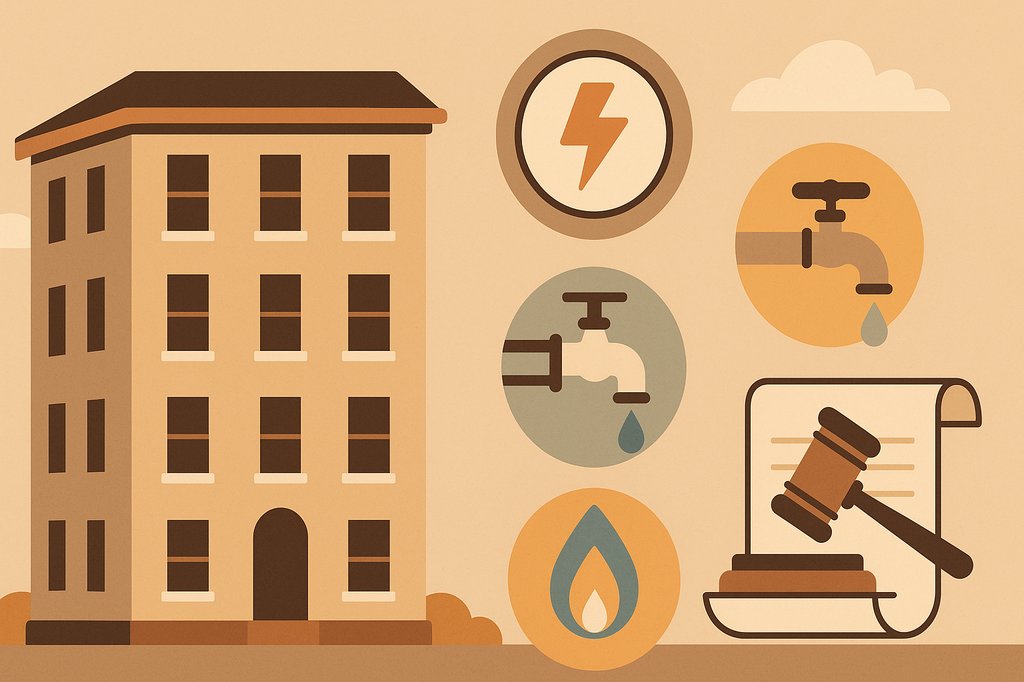Ease Big Tax Bills from Real Estate Sales or Income Using Bonus Depreciation
By Christopher Miller, MBA
Specialized Wealth Management
March 1, 2024
Last month, we explored Accelerated Depreciation as a tool to defer (potentially forever) taxes on our real estate income. Toward the end of that article, I mentioned the exceptionally valuable deductions that owning service stations can offer. That article attracted the attention of several colleagues who were well-versed in and very experienced with using service stations to lessen annual taxes from real estate (passive) income. This month, we will look at how this unique benefit can help us.
Service Stations for Tax Deferral of Income – Upfront Tax Deductions
Section 128(k) from the IRS tax code calls for “bonus depreciation” for certain assets. Service stations and convenience stores, provided that 50% of the property’s revenue comes from the sale of motor fuels, will qualify for this incentive. This section, a permanent feature of the tax code, allows a service station purchaser to depreciate a large part of the property’s improvements value in year 1. The portion of the improvements that can be deducted in year 1 has varied over the years – 100% could be taken between late 2010 and the end of 2011, and the 2017 Tax Cuts and Jobs Act allowed 100% to be taken again between 2017 and 2022. The rate decreased to 80% and to 60% in 2024.
A bipartisan effort in Congress, backed by government data on the economic benefits of these incentives, is currently underway to raise this 100% deduction for years 2024, 2025, and retroactively to 2023. Some Congressional research is suggesting that a permanent 100% rate is possible. Since Congress restoring the 100% rate seems likely, I will use that percentage for all examples in this article. To adjust for current rates, just multiply the benefits mentioned by 60%.
What Does That Mean?
This means that investors with high real estate (passive) annual income can lower their tax bills by purchasing gas stations. This doesn’t mean that you need to operate the gas stations – just like fast food restaurants, most stations have landlords who own the real estate and lessees (tenants) who operate the business.
Let’s use as an example a client who earns $500,000 of annual taxable passive real estate income after all expenses and existing depreciation is deducted. A $200,000 equity investment in a service station with a 50% loan, (so our investor buys $400,000 of real estate) could therefore generate a $320,000 deduction for our client. This would bring his taxable income for 2024 down from $500,000 to $180,000 – resulting in a potentially much lower tax bill, and a very happy client. Since his investment is partially “refunded” by a tax benefit, he can see this as buying an investment property at a steep discount while enjoying income and growth potential on the “full value.”
How Do Those Numbers Work?
A $200,000 down payment on a service station (or a partial interest in one) plus a 50%, $200,000, loan equals $400,000 of real estate purchased. Since land can’t be depreciated, you and your CPA will need to estimate what the value of your improvements are on your property. For this article, I’ll estimate 80%. A cash (non 1031) investor’s depreciable basis will be $400,000 X 80% = $320,000), so his $200,000 investment bought $320,000 of deductions.
Using the Service Station Deduction to Shelter Capital Gains and Accumulated Depreciation Taxes From Investment Real Estate Sold Without a 1031 Exchange
Since I have been advising clients on tax-advantaged investments since 2003, I often get phone calls from investors saying “I sold a property and didn’t complete my 1031 Exchange. I don’t want to spend any more than my sales proceeds: what can I do to avoid taxes? The top option for the past several years has been “Buy an Opportunity Zone.” Opportunity Zones, however, are expected to sunset in early 2024, wouldn’t shelter accumulated depreciation taxes, and only delayed rather than deferred taxes. Now “buy a gas station!” could be an even more attractive option.
Our sample client in this case bought an apartment building back in 1985 for $200,000 and sold it in January of 2024 for $1,800,000. He hadn’t met me yet, and didn’t know the benefits that a 1031 Exchange could offer, so escrow sent the sales proceeds to his checking account and created a big taxable event. The way the IRS and California see it, he owes tax on the $160,000 of depreciation he took over his ownership period (25% IRS + 9.3% CA) and on his $1,600,000 Capital Gain. (20% IRS – for big Capital Gains you’ll end up in the higher bracket – and another 9.3% for CA.) This will yield an approximate tax bill of $523,680 on his $1,600,000 gain – or a nearly 33% rate. Ouch!
Fortunately, this client met me before 2024 ended. I showed him how he could, with $1.1 million of his $1.8 million sales proceeds, invest in a service station leveraged at 50% for a $2.2 million total purchase. At an 80%/20% improvements to land ratio, his upfront tax deduction for this year is worth $1,760,000 – the exact total of his taxable accumulated depreciation and his capital gain. This will have the effect of “zero-ing out” his taxes on the sale – and he still has $700,000 of sales proceeds in his checking account that will not be subject to tax this year – and potentially never!
Depreciation Taken is a Tax Deferred – Potentially Forever
As our investor saw in his property above, depreciation that is used to defer income taxes today will add up over the years as “accumulated depreciation.” If we sell our property in the future, and do not do a 1031 Exchange¸we will pay the tax on it then. It is possible, however, to defer this tax forever and never pay it – by continuing to do 1031 Exchanges throughout our lifetimes. I, and most of my clients, plan to complete 1031 Exchanges every time we sell a property. This will defer our taxes in perpetuity and allow us to enjoy income and growth potential generated from the full amount of our accumulated real estate principal: not just “what is left after taxes.” When we die, those taxes will disappear and our heirs will receive the full value of our real estate life’s work. This is why I always add “potentially forever” when I mention taxes deferred by 1031 Exchanges.
I spoke with a colleague recently who, as a professional real estate investor and manager, generates most of his earnings as passive income. He buys gas stations as part of his annual tax planning to minimize his tax bill and maximize the income and growth potential of his investments – he can use tax savings to create more income for the future. I was intrigued by this idea, and am now speaking with my clients about how it can benefit them as well.
If you would like to discuss how this bonus depreciation could potentially help you, my office number is (877) 313-1868.
Christopher Miller is a Managing Director with Specialized Wealth Management and specializes in tax-advantaged investments including 1031 replacement properties. Chris’ real estate experience includes work in commercial appraisal, in institutional acquisitions for a national real estate syndicator and as an advisor helping clients through over five hundred twenty five 1031 Exchanges. Chris has been featured as an expert in several industry publications and on television and earned an undergraduate business degree and an MBA emphasizing Real Estate Finance from the University of Southern California. Chris began his real estate career in 1998. Call him toll-free at (877) 313 – 1868.
Securities offered through Emerson Equity LLC, member FINRA/SIPC. Emerson Equity LLC and Specialized Wealth Management are not affiliated. All investing involves risk. Always discuss potential investments with your tax and/or investment professional prior to investing.








